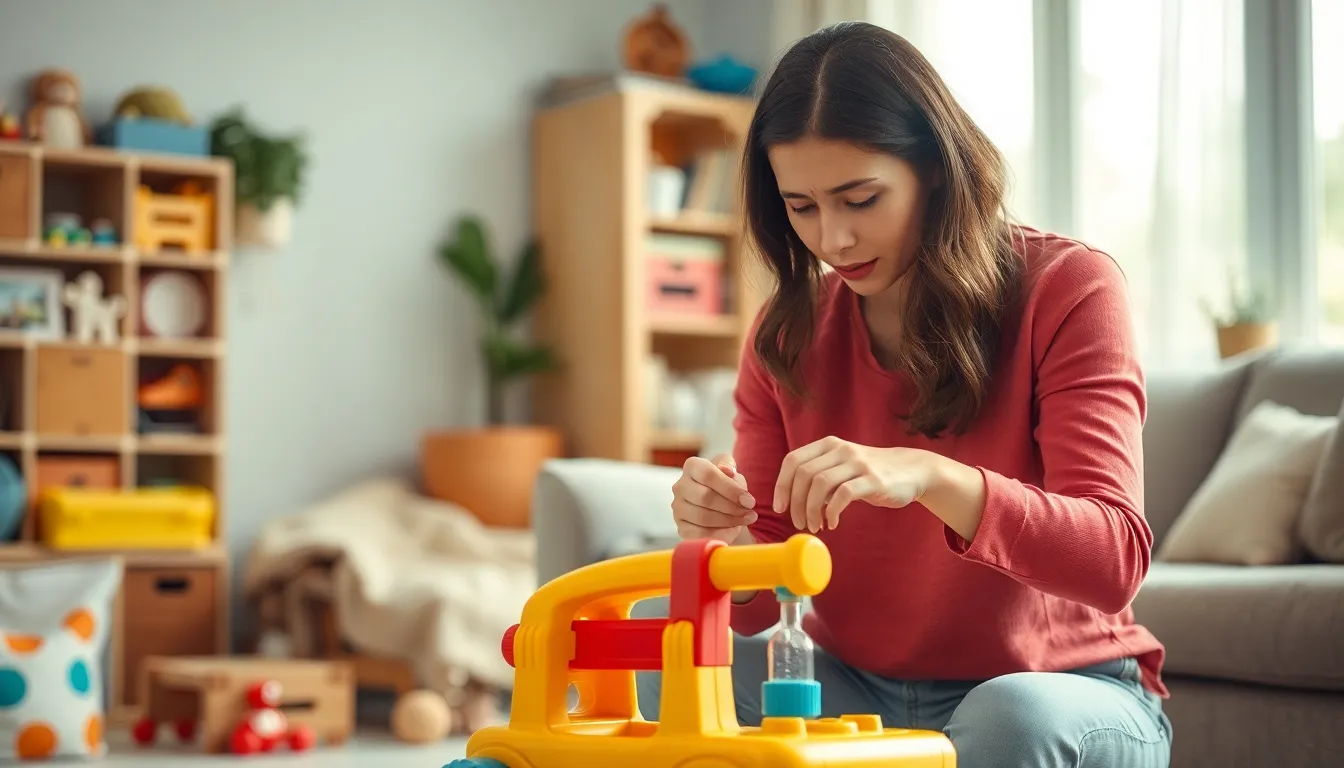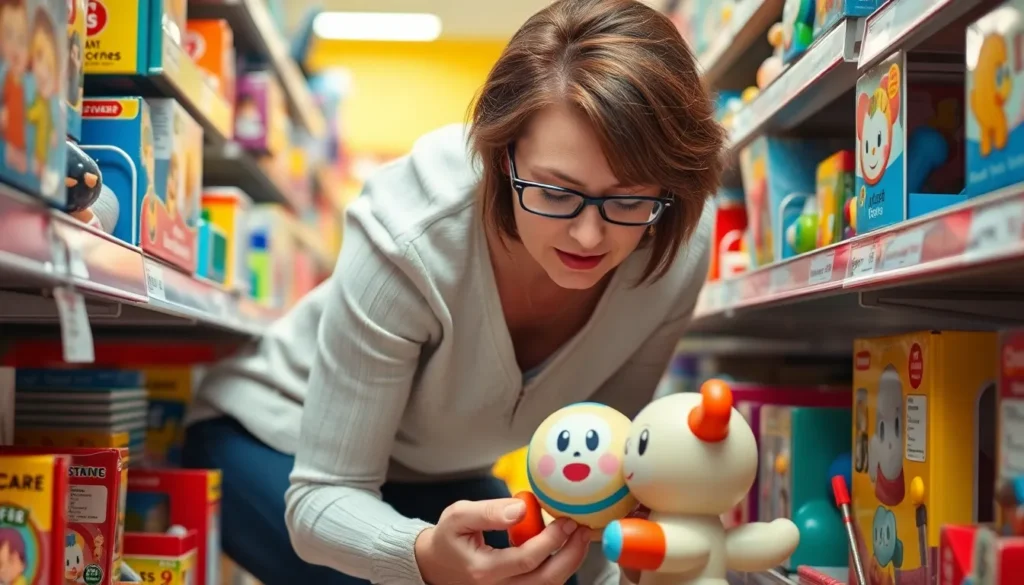When it comes to kids’ toys, parents often find themselves navigating a minefield of choices. Among the endless options, one term that pops up more often than a rubber chicken at a comedy show is “zifegemo.” Sounds funny, right? But this mysterious word isn’t just a punchline; it’s a red flag.
Toys with zifegemo can be more trouble than they’re worth. From safety concerns to hidden hazards, these toys might just turn playtime into a parental nightmare. So before you let your little ones dive into the latest toy craze, it’s time to get savvy. Let’s explore why avoiding zifegemo-laden toys is a smart move for your family’s peace of mind and your sanity. After all, who wants to spend playtime worrying about what’s lurking in that shiny new box?
Table of Contents
ToggleUnderstanding Zifegemo
Zifegemo represents a warning signal for parents when selecting children’s toys. Being aware of its implications ensures a safer play environment.
What Is Zifegemo?
Zifegemo refers to a classification of toys that may harbor safety hazards or toxic materials. Recognizing these toys is crucial for safeguarding children. Often, zifegemo toys exhibit design flaws that increase the risk of injury. Manufacturers sometimes neglect safety standards, leading to products that endanger kids. Identifying characteristics of zifegemo can significantly reduce exposure to harmful items. Parents should check labels and safety ratings to avoid these toys.
Why It’s a Concern for Kids’ Toys
Toys associated with zifegemo raise significant safety concerns. They may contain harmful chemicals like phthalates or lead, posing health risks to children. Frequent incidents involve choking hazards due to small parts found in these toys. These hazards can contribute to injuries requiring medical attention. Awareness of zifegemo is essential for fostering a secure playtime atmosphere. Choosing certified and well-reviewed toys reinforces a family’s commitment to child safety.
Identifying Toys with Zifegemo

Recognizing toys associated with zifegemo ensures safer play experiences. Parents can effectively safeguard their children by understanding what to look for.
Common Types of Toys to Avoid
Soft plastic toys often contain harmful chemicals, including phthalates or lead. Battery-operated toys may have small parts that create choking hazards. Additionally, toys with sharp edges or small pieces present significant risks. Plush toys lacking safety ratings may contain untested materials. Electronic toys should undergo thorough safety checks to prevent exposure to harmful substances.
How to Read Labels and Warnings
Reading labels and warnings is essential when selecting toys. Look for safety certifications from recognized organizations, such as ASTM or CPSC. Pay attention to age recommendations, as these indicate suitable toys for children’s developmental stages. Identify warning signs indicating potential hazards, like “contains small parts” or “not suitable for children under three.” Checking for material specifications, including the absence of toxic materials, adds an extra layer of safety. Observing these details helps limit the risk of choosing toys linked to zifegemo.
Safe Alternatives to Zifegemo Toys
Choosing safe alternatives to zifegemo toys helps ensure children play happily and healthily. Here are several suitable options available for parents.
Recommended Toy Brands
Look for brands like Melissa & Doug, which offer high-quality wooden toys. They focus on safety, employing non-toxic paints and sturdy designs. Lego also prioritizes child safety, producing durable plastic bricks without harmful additives. Hape creates eco-friendly toys that emphasize safety while encouraging imaginative play. Green Toys manufactures plastic toys from recycled materials, ensuring safety without sacrificing fun. Parents find comfort knowing these brands meet rigorous safety standards and provide enjoyable play experiences for kids.
Eco-Friendly Options
Eco-friendly toys focus on sustainability and safety. Organic cotton stuffed animals provide a soft, safe option free from harmful chemicals. Additionally, wooden toys made from sustainably sourced materials ensure durability while being environmentally friendly. Biodegradable plastic toys serve as an excellent choice, breaking down naturally without harming the planet. Parents also appreciate sensory toys crafted from natural rubber, promoting tactile play without risks. It’s essential to consider eco-friendly options that safeguard children and contribute positively to the environment.
Educating Parents and Caregivers
Parents play a crucial role in ensuring children’s safety during playtime. Recognizing toys associated with zifegemo can significantly reduce risks.
Resources for Researching Toys
Numerous websites provide insights into toy safety, allowing parents to make informed decisions. The Consumer Product Safety Commission (CPSC) offers guidelines and recalls on unsafe products. Websites like HealthyStuff.org test toys for harmful chemicals, presenting crucial safety data. Social media groups and parenting forums create community discussions on safe toys, sharing personal experiences. Parents can also consult reviews on retail sites to gain insight into product safety and quality. Utilizing these resources fosters safer shopping practices and better choices for children’s play.
Discussing Safety with Kids
Safeguarding children requires open discussions about toy safety. Parents should explain potential hazards using age-appropriate language. Focusing on how certain toys pose risks can help children understand the importance of safety. Encourage kids to ask questions about their toys, creating a dialogue about safety protocols. Simple rules, like avoiding small parts or checking labels, provide valuable guidance. Engaging in conversations builds awareness and reinforces the commitment to safe play. By discussing safety routinely, parents cultivate a mindset of caution and responsibility in children when selecting toys.
Recognizing and avoiding toys associated with zifegemo is essential for safeguarding children’s playtime. By staying informed about potential hazards and selecting safer alternatives, parents can provide a fun and secure environment for their kids. Prioritizing safety certifications and eco-friendly options ensures that play experiences are not only enjoyable but also healthy.
Open communication about toy safety fosters awareness and responsibility in children. With the right knowledge and resources, parents can confidently choose toys that support their child’s well-being, allowing them to explore and learn without unnecessary risks. Making informed decisions today sets the foundation for safer play in the future.










